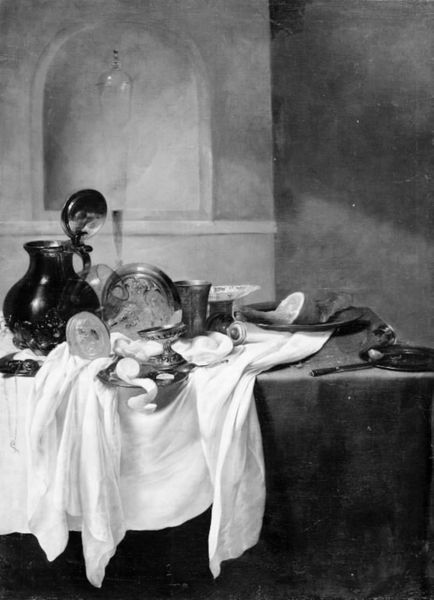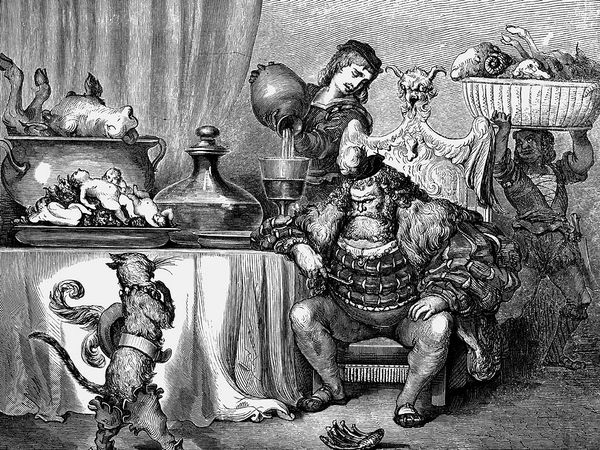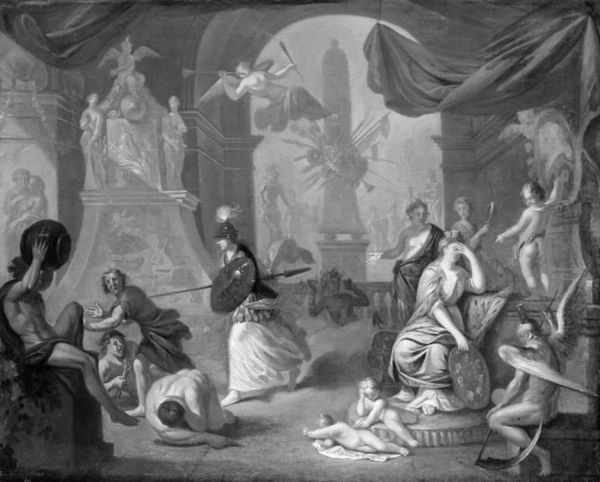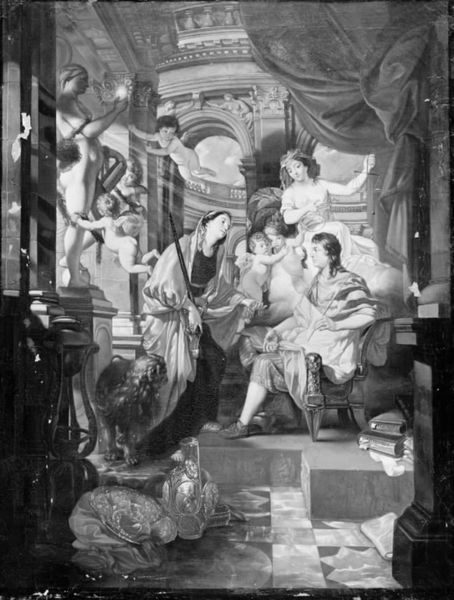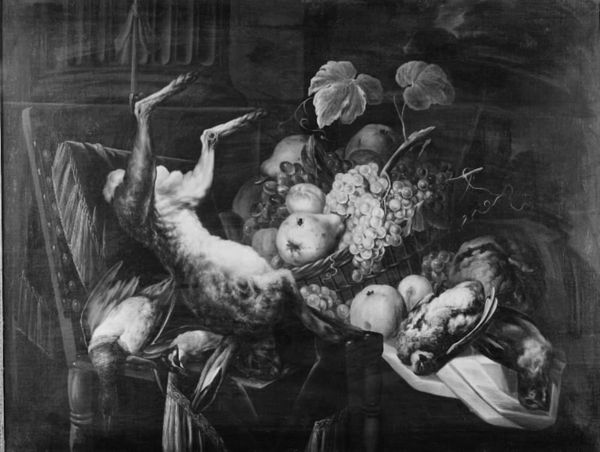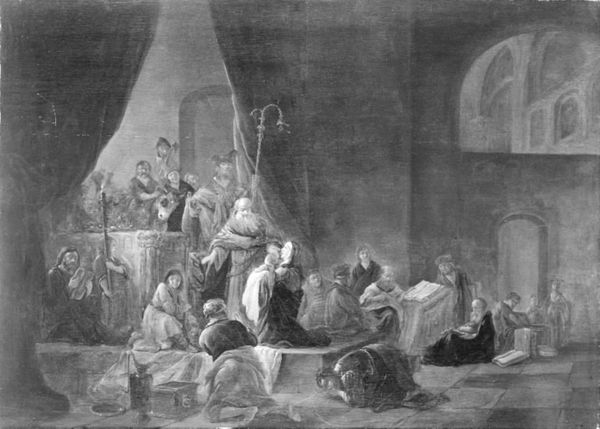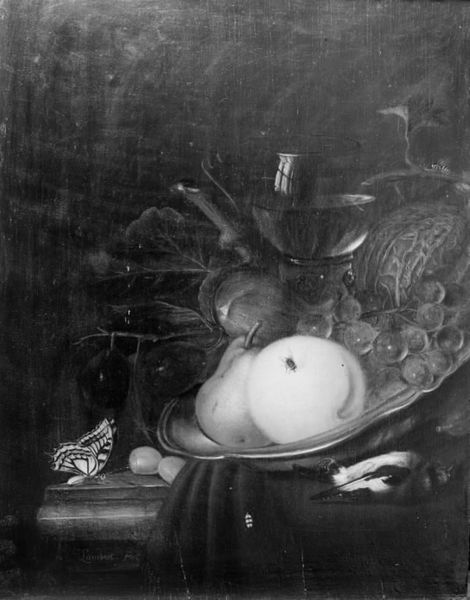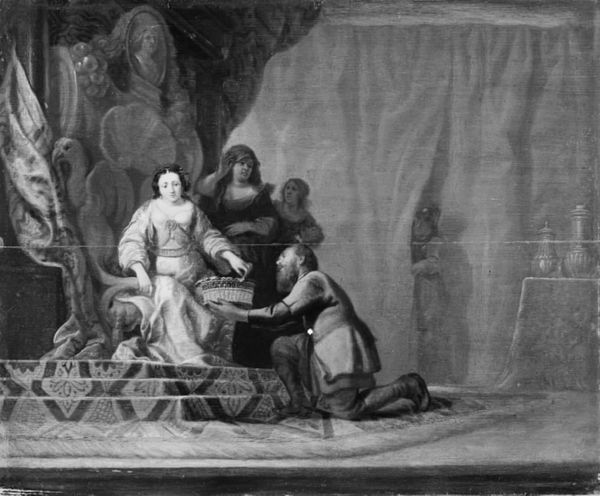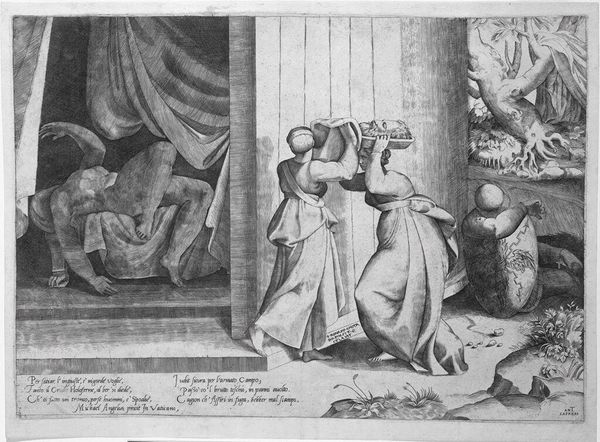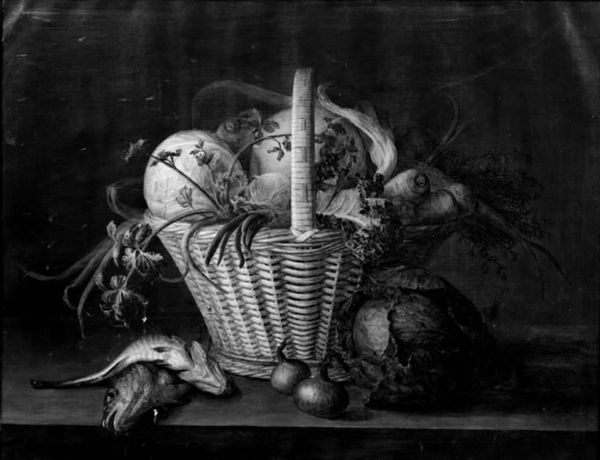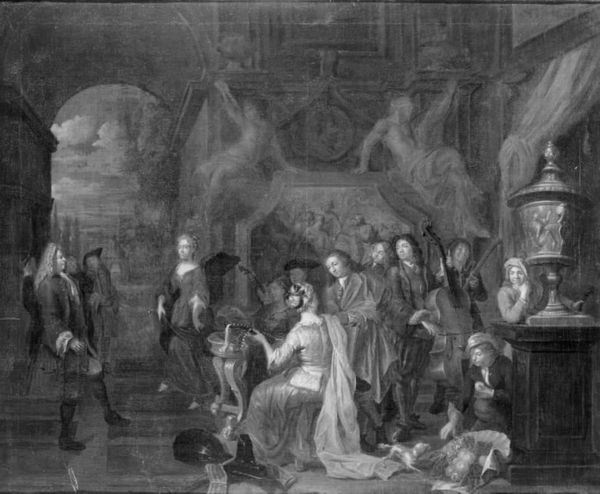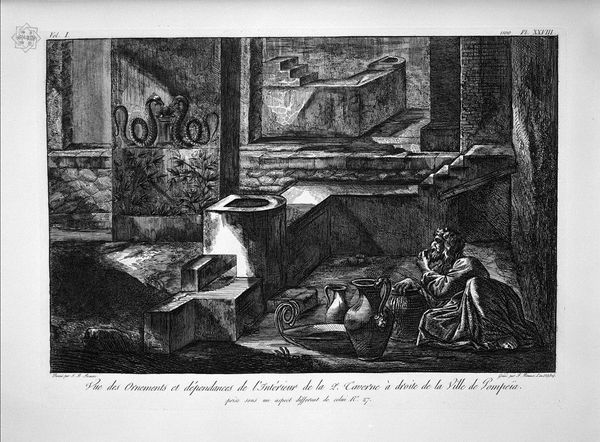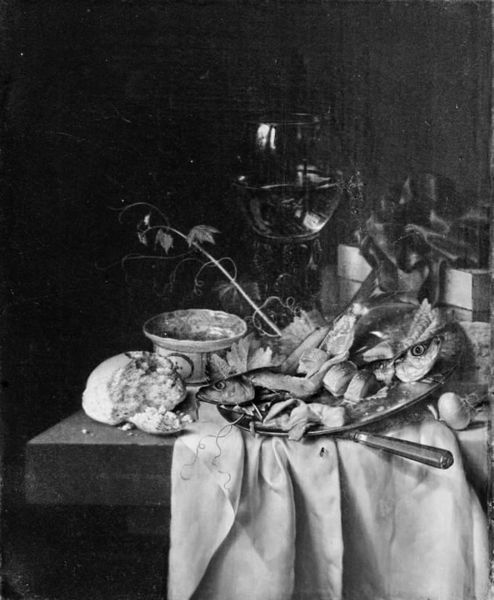
A Jug, Fruit, Food and other Things on a Table 1659 - 1660
0:00
0:00
painting, oil-paint, canvas
#
baroque
#
painting
#
oil-paint
#
canvas
#
black and white
Dimensions: 100 cm (height) x 122 cm (width) (Netto)
Curator: This artwork is a Baroque still life entitled "A Jug, Fruit, Food and other Things on a Table" created between 1659 and 1660 by Cornelis Cruys. Editor: It feels somber, despite the apparent bounty. The monochrome palette definitely lends a heavy atmosphere. Curator: The lack of color is striking. Typically, Baroque still lifes are celebrated for their vibrant depictions of luxury goods. It pushes us to consider the composition more— the varying textures of glass, metal, and fabric are definitely the subject. Editor: Right, Cruys makes a very pointed decision to reduce the usual Baroque emphasis on luxury to focus on labor and method. Curator: Exactly! Think of the craftspeople involved in producing these items— the glassblowers, the silversmiths. This is as much a record of material production as it is a snapshot of affluent dining. Editor: I'm struck by the public display of private consumption. Placed in a gallery, the history surrounding this artwork shifts to its own time, from aristocratic feasts to an increasingly accessible art experience. The setting influences our interpretation, of course. Curator: Certainly, the staging affects consumption itself. Consider also what isn't present, for instance: the actual consumption that generated such wealth. The painter omitted such signs of excess—this table has all the appearance of the meal, but is clearly something different. Editor: These kinds of paintings, despite seeming timeless, gain entirely new levels of relevance when displayed. The social implications in a public space turn historical displays into comments on value itself. Curator: Ultimately, this seemingly straightforward still life provides a glimpse into both the opulent materials of the era and the craftsmanship, while reflecting the very idea of presenting abundance in a gallery setting. Editor: An artwork is never truly still! Considering it through this lens reveals how our interpretations are tied to culture, medium, and social structures.
Comments
No comments
Be the first to comment and join the conversation on the ultimate creative platform.
